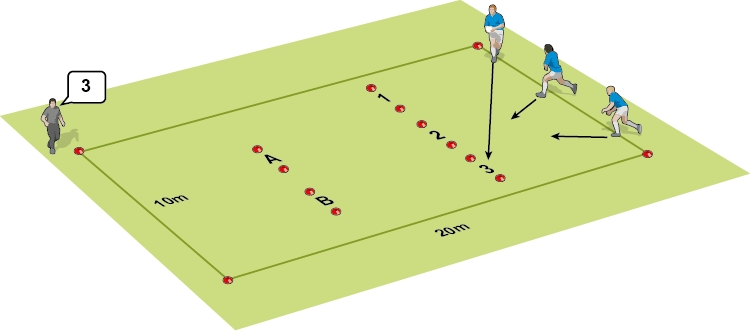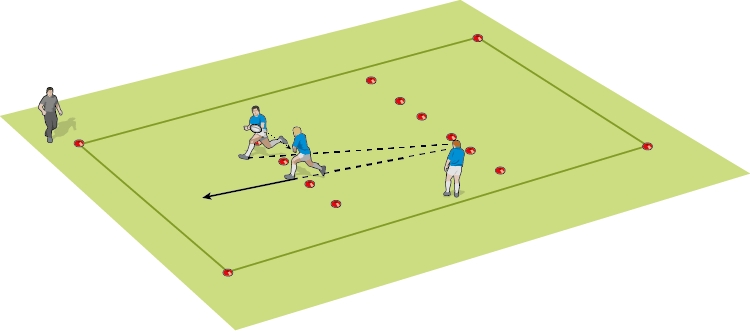You are viewing
1 of your 2 free articles
Supporting the break
Attackby Dan Cottrell
Develop how the support player tracks the ball carrier so he can be ready to take a pass or help the ball carrier should he be tackled.
Reading the movements of the ball carrier means the support player can find themselves in the best positions to receive the next pass.



Put a ruck-pad holder into the channel. He runs to one of the gates and the ball carrier has to drive into the pad and go to ground for the next support player to drive the pad out of the way. Or have a defender who can tackle at waist height guard the last two gates.
Reading the movements of the ball carrier means the support player can find themselves in the best positions to receive the next pass.

- Start a ball carrier at the corner of the box.
- Put a support player in the middle of the same end and another on the other corner.
- Tell the ball carrier to run towards one of the three gates of cones.

- He goes through and passes immediately to a support player.

- The support player then runs through towards another gate of cones (his choice) and then passes immediately.
DEVELOPMENT
Put a ruck-pad holder into the channel. He runs to one of the gates and the ball carrier has to drive into the pad and go to ground for the next support player to drive the pad out of the way. Or have a defender who can tackle at waist height guard the last two gates.
TECHNIQUE
- Two hands on the ball.
- Calling clearly for the ball.
- Running onto the pass.
Related Files
Vol-1-Issue-441-D-Cottrell-supporting-the-break.pdfPDF, 299 KB
Newsletter Sign Up
Coaches Testimonials

Gerald Kearney, Downtown Las Vegas Soccer Club

Paul Butler, Florida, USA

Rick Shields, Springboro, USA

Tony Green, Pierrefonds Titans, Quebec, Canada
Subscribe Today
Be a more effective, more successful rugby coach
In a recent survey 89% of subscribers said Rugby Coach Weekly makes them more confident, 91% said Rugby Coach Weekly makes them a more effective coach and 93% said Rugby Coach Weekly makes them more inspired.
Get Weekly Inspiration
All the latest techniques and approaches
Rugby Coach Weekly offers proven and easy to use rugby drills, coaching sessions, practice plans, small-sided games, warm-ups, training tips and advice.
We've been at the cutting edge of rugby coaching since we launched in 2005, creating resources for the grassroots youth coach, following best practice from around the world and insights from the professional game.
More from us
© 2023 Rugby Coach Weekly
Part of Green Star Media Ltd. Company number: 3008779
We use cookies so we can provide you with the best online experience. By continuing to browse this site you are agreeing to our use of cookies. Click on the banner to find out more.













